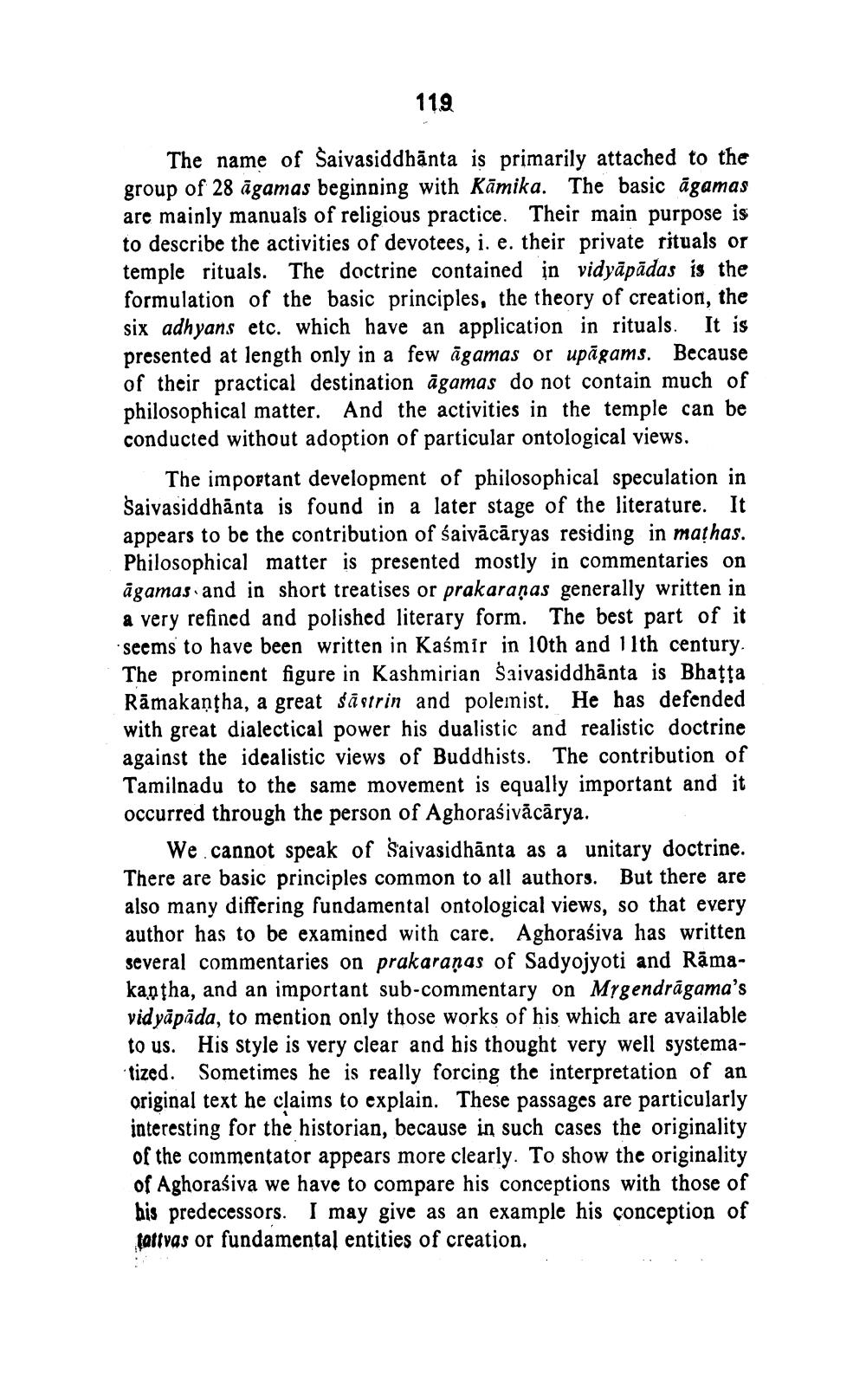Book Title: Raja Raja The Great Author(s): Anantacharya Indological Research Institute Publisher: Anantacharya Indological Research Institute View full book textPage 9
________________ 119 The name of Saivasiddhānta is primarily attached to the group of 28 āgamas beginning with Kāmika. The basic āgamas are mainly manuals of religious practice. Their main purpose is to describe the activities of devotees, i. e. their private rituals or temple rituals. The doctrine contained in vidyāpādas is the formulation of the basic principles, the theory of creation, the six adhyans etc. which have an application in rituals. It is presented at length only in a few āgamas or upāgams. Because of their practical destination agamas do not contain much of philosophical matter. And the activities in the temple can be conducted without adoption of particular ontological views. The important development of philosophical speculation in Saivasiddhānta is found in a later stage of the literature. It appears to be the contribution of saivācāryas residing in mathas. Philosophical matter is presented mostly in commentaries on āgamas and in short treatises or prakaraṇas generally written in a very refined and polished literary form. The best part of it seems to have been written in Kaśmir in 10th and 11th century. The prominent figure in Kashmirian Saivasiddhanta is Bhatta Rämakantha, a great sõstrin and polemist. He has defended with great dialectical power his dualistic and realistic doctrine against the idealistic views of Buddhists. The contribution of Tamilnadu to the same movement is equally important and it occurred through the person of Aghoraśivācārya. We cannot speak of Saivasidhānta as a unitary doctrine. There are basic principles common to all authors. But there are also many differing fundamental ontological views, so that every author has to be examined with care. Aghoraśiva has written several commentaries on prakaranas of Sadyojyoti and Rāmakantha, and an important sub-commentary on Mygendrāgama's vidyāpāda, to mention only those works of his which are available to us. His style is very clear and his thought very well systematized. Sometimes he is really forcing the interpretation of an original text he claims to explain. These passages are particularly interesting for the historian, because in such cases the originality of the commentator appears more clearly. To show the originality of Aghoraśiva we have to compare his conceptions with those of his predecessors. I may give as an example his conception of fattvas or fundamental entities of creation.Page Navigation
1 ... 7 8 9 10 11 12 13 14
